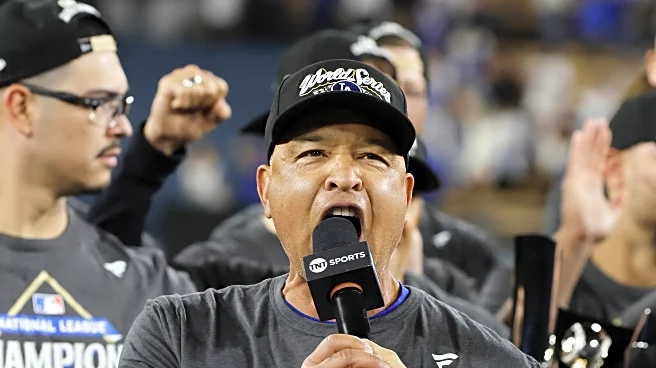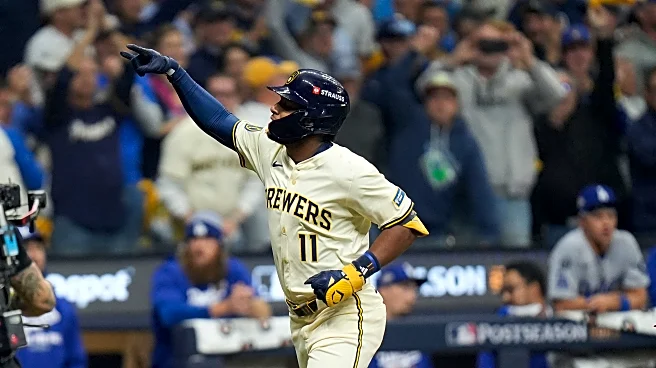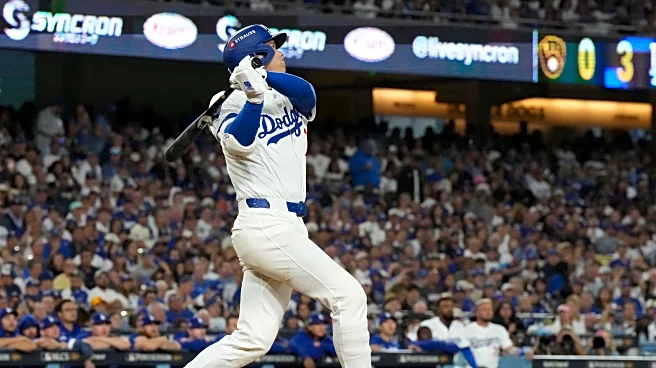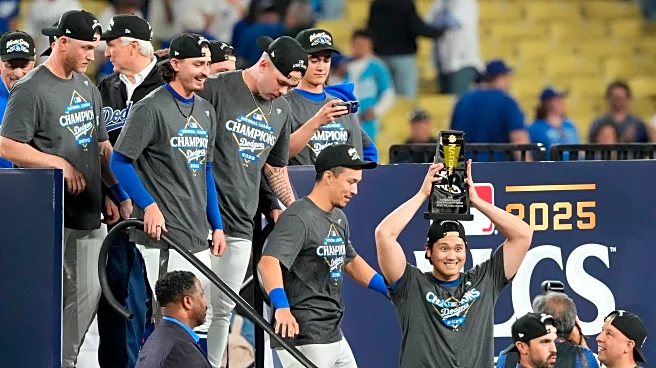What's Happening?
Brewers manager Pat Murphy has been vocal about the payroll disparities between the Milwaukee Brewers and the Los Angeles Dodgers during the National League Championship Series (NLCS). Despite the Brewers finishing the regular season with the best record
in baseball and a 6-0 record against the Dodgers, Murphy has maintained an underdog narrative. He questioned the Dodgers' familiarity with the Brewers' roster, suggesting they couldn't name eight players. This approach, however, did not prevent the Brewers from being swept by the Dodgers in the playoffs. Murphy's comments have drawn reactions from Dodgers' pitcher Blake Snell and manager Dave Roberts, who dismissed the narrative as a psychological tactic.
Why It's Important?
Murphy's comments highlight the ongoing debate about payroll disparities in Major League Baseball and their impact on team performance. The Dodgers, known for their high payroll, have consistently been competitive, while the Brewers have achieved success with a more modest budget. This situation underscores the challenges smaller market teams face in competing with wealthier franchises. Murphy's strategy of portraying his team as underdogs may have been intended to motivate his players, but it also reflects the broader financial dynamics in the league. The outcome of the series suggests that while payroll can influence team depth, it is not the sole determinant of success.
What's Next?
The Brewers will need to reassess their strategy and roster as they prepare for the next season. Murphy's comments may prompt discussions within the organization about how to leverage their resources more effectively. Meanwhile, the Dodgers will continue their postseason campaign, potentially facing teams with similar financial capabilities. The broader conversation about payroll disparities in MLB is likely to persist, with potential implications for future collective bargaining agreements and league policies.
Beyond the Headlines
Murphy's approach raises questions about the psychological aspects of sports management and the role of public statements in team dynamics. His comments could be seen as an attempt to deflect pressure from his players or to engage in mind games with the opposition. This incident also highlights the cultural differences in how teams and managers handle media interactions and public perceptions. The long-term impact of such strategies on team morale and performance remains a topic of interest for sports analysts.















